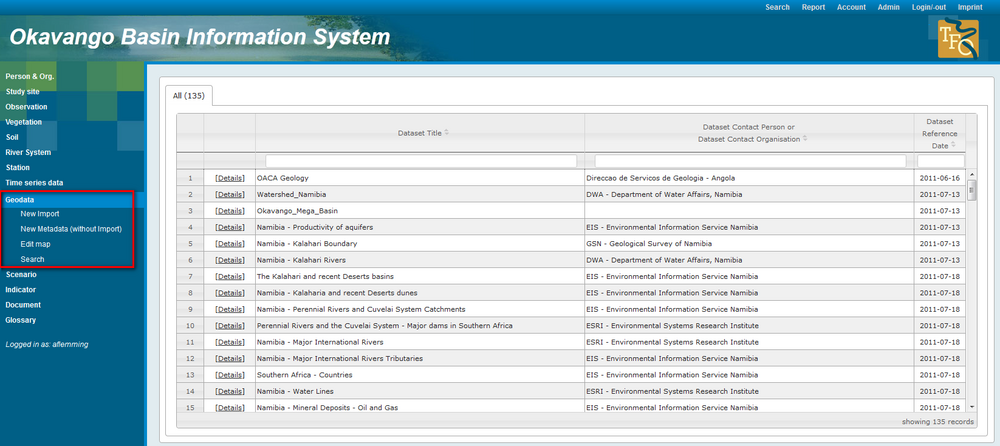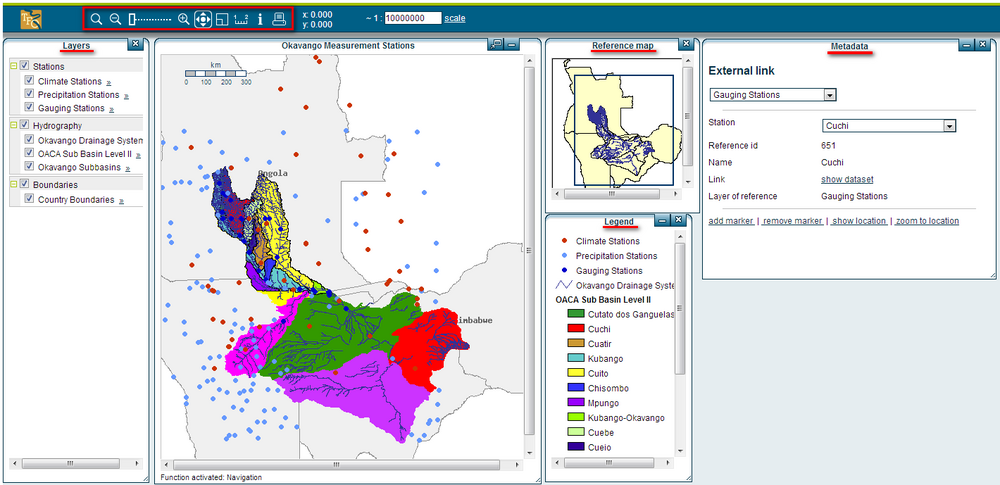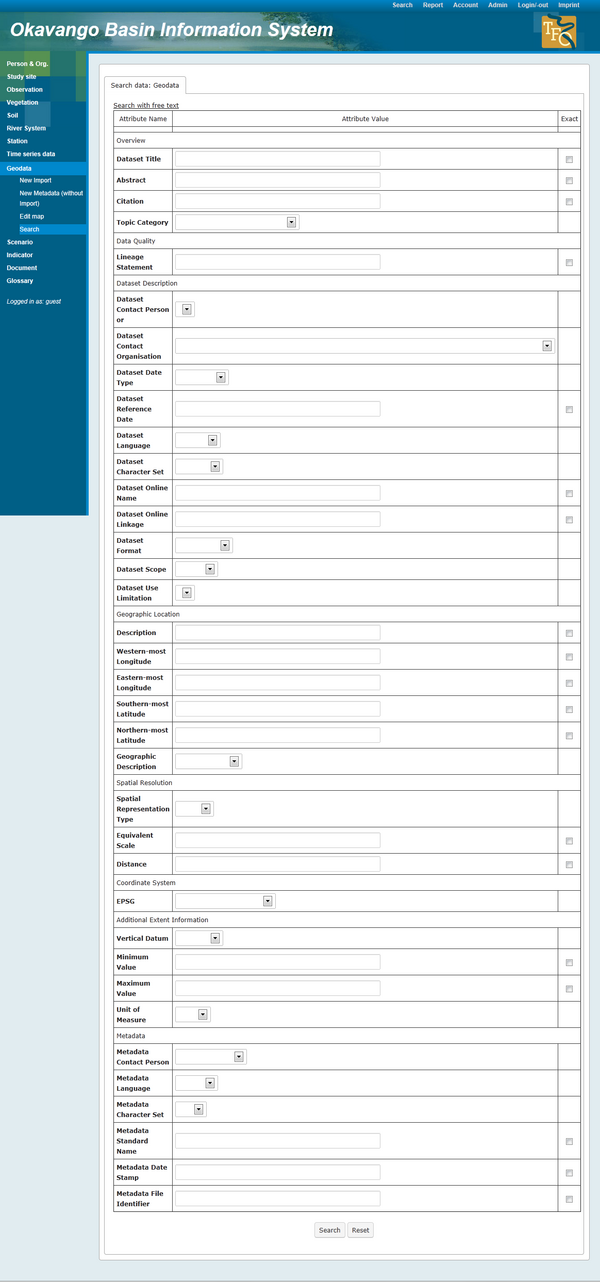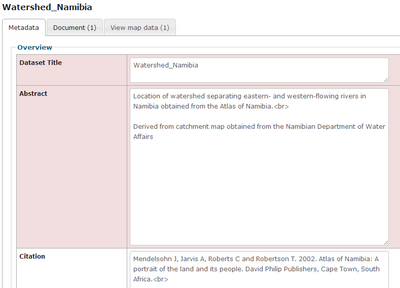OBIS: User interface concepts
(→Editing data) |
(→Editing data) |
||
| Line 38: | Line 38: | ||
Use the edit icon to edit metadata and the form to edit metadata information appears. You can see and edit the entries in the form. Red marked are those fields which are mandatory. | Use the edit icon to edit metadata and the form to edit metadata information appears. You can see and edit the entries in the form. Red marked are those fields which are mandatory. | ||
| − | In case you want to add new metadata click on the link "New Metadata" in the menu on the left. The same form will appear, but with empty entry fields. '''Note: It is only possible to | + | In case you want to add new metadata click on the link "New Metadata" in the menu on the left. The same form will appear, but with empty entry fields. '''Note: It is only possible to edit or delete data if you have the neccessary authorization.''' |
[[File:OBIS_edit_metadata.png|400px|options]] | [[File:OBIS_edit_metadata.png|400px|options]] | ||
Revision as of 08:32, 20 March 2013
Contents |
Common user interfaces
OBIS allows to store, manage and visualize a number of different data types as described in OBIS: getting started, e.g. time series data and geodata. In general, the main user interfaces of all of these data show a similar layout and offer the same functionality which will be outlined in the next sections. As an example for the management, visualization and download of data, the geodata data type will be used here. As geodata we can define a dataset that has a spatial aspect or component.
Data overview
The Geodata overview lists all datasets, a contact person or organisation and a reference date. Each column can be arranged in descending and in ascending order. To list the column in alphabetical order, click on the name of the corresponding comumn. Click again to see the records in reversed order. You can also list the datasets according a specific contact person or a reference date. The link below the table allows to export the list of datasets as a CSV file.
In the menu on the left side you see different sub items of the geodata section. The functionalities "New import", "New Metadata" and "Edit map" will be described in detail in the section OBIS: Edit Geodata.
Browsing data
With a click on details in the row of a specific dataset all information linked to this dataset appear. First all metadata are listed. In the section "Document" the files for download are available. The buttons above the table can be used to navigate between all single data sheets based on the filter result of the overview list.
In the section "View map data" geodata will be visualized. For the visualization process you will be redirected to JanusWeb, a product of Codematix GmbH Jena, which is an integral part of the information system. By default all layers connected to this dataset were displayed. You have the possibility to activate layers by clicking the respective checkboxes. On the right side a reference map is shown and a legend appears below. For further information how to use the map, see chapter Map navigation and Map functions.
Searching data
The search function on the left side menu allows the search for datasets by free text or selection list. You can switch between these two modes by clicking either "Search with free text" or "Search with selection list". You can search according many different attributes, e.g. latitude, longtitude, spatial representation type and many more (see the screenshot of the search mask below). If you mark the checkbox in the column "Exact", the search will be carried out without wildcards. If you do not mark the checkbox, the search items entered in the entry field will be searched for as a string in the data entries irrespective of case sensivity.
Editing data
By clicking on "Details" in the overview table of datsets, you see first metadata information. Below the header you have two icons: the pencil to edit data and the garbage can to delete data.
Use the edit icon to edit metadata and the form to edit metadata information appears. You can see and edit the entries in the form. Red marked are those fields which are mandatory.
In case you want to add new metadata click on the link "New Metadata" in the menu on the left. The same form will appear, but with empty entry fields. Note: It is only possible to edit or delete data if you have the neccessary authorization.
Links between datasets
In many cases, a single OBIS dataset is a compound, consisting of more than one element. As an example, a time series dataset may consist of
- a metadata description of that dataset
- the real time series data
- links to a measurement station the time series data have been measured at
With regards to geodata you have
- one or more documents containing the real data or preview images of them
- a map layer to be used to display interactive maps in through the OBIS mapserver




